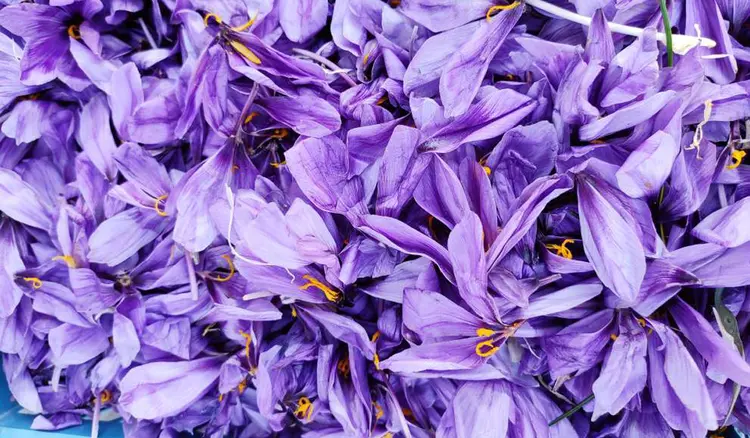The Benefit Of Saffron Petal Usage On Saffron Growth And Yield
Effects on managing crop residues and cover crop planting on density, population of weeds, and agronomical characteristics of saffron (Crocus sativus L.)
I've been reading about the remarkable health benefits of saffron petals. For centuries, it has been utilized in traditional medicine due to its stomach soothing and antispasmodic properties. However, that's not where it ends - it's also known to be a potent anxiety cure, an effective antitumor agent, and an antidepressant. It's truly astonishing how this unassuming plant can support our overall health and well-being in many ways!
To investigate the effects of mulch types and different cover crops on relative frequency, density, and biomass of weeds and agronomic characteristics and flower and stigma yield of saffron (Crocus sativus L.), an experiment was conducted based on a randomized complete block design with three replications at the Agricultural Research Station, Ferdowsi University of Mashhad, during two growing season 2009-2010 and 2010-2011.
Treatments included three crop residues, sunflower, barley, and garlic, and six cover crop species, including barley, matter pea, rye, Persian clover, vetch, and arugula, and control. The studied characteristics were population, density, biomass of weeds and flower number, fresh flower weight, stigma yield, leaf emergence rate, and flowering rate. Results showed that the effect of treatments was significant (p≤0.01) on dry weight and density of weeds. The lowest weed density of narrow-leaf and broad-leaf species were observed in vetch with 0.7 and 0.8 species.m-2, and the highest was for control with 11.3 and 16.2 species.m-2, respectively. Also, treatments had significant effects (p≤0.01) on leaf emergence rate, flowering rate, flower number, fresh weight of flower, and stigma yield of saffron.
The maximum flower number and stigma yield were achieved in vetch with 244550.0 flowers.ha-1 and 1010.1 g m-2, and the minimum was for control with 66241.7 flowers ha-1 and 187.5 g m-2, respectively. Applying different crop residues and cover crops decreased density, and weeds' dry weight decreased due to their allelopathy trait. Cover crops increased the growth and yield of saffron due to enhancement in nutrient and nitrogen availability as nitrogen fixation and improvement in soil characteristics.
Shabahang J, Khorramdel S, Amin Ghafori A. Effects on management of crop residues and cover crop planting on density and population of weeds and agronomical characteristics of saffron (Crocus sativus L.). Journal of Saffron Research. 2013 Jun 22;1(1):57-72.
Hamed Biglari
Assistant Professor of Environmental Health Engineering in Gonabad University of Medical Sciences, Razavi Khorasan, Iran




Your Comment
Required fields*